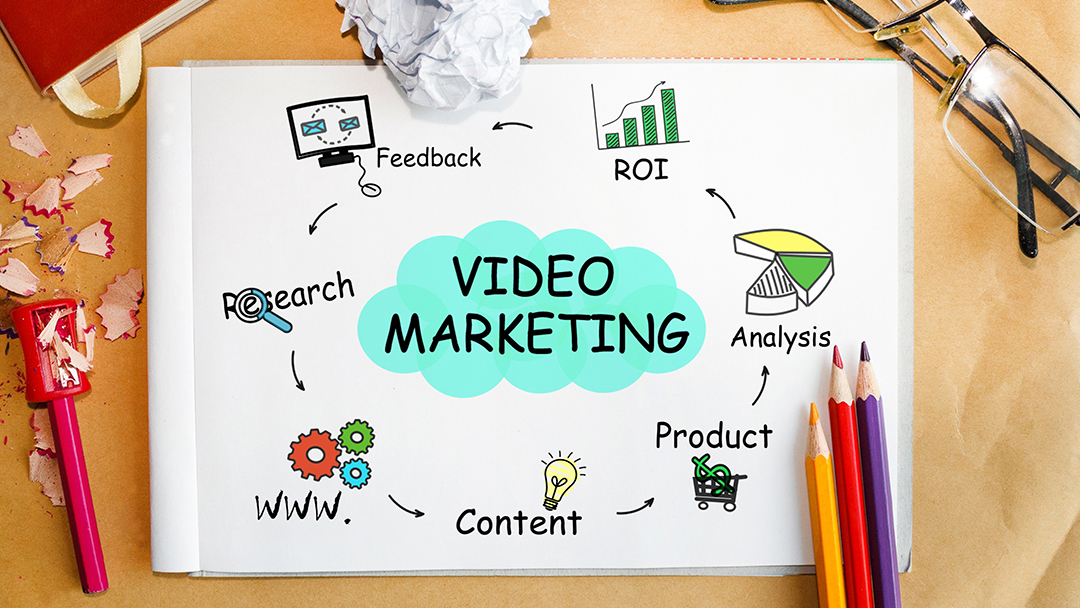Essential Considerations for Your 2022 Video Marketing Plan
Congratulations! The boss says you’ve got the green light to begin producing video as part of your marketing plan and the leadership team supports...
This post was updated on September 29, 2025 for accuracy and relevance.
Everyone's talking about AI-generated content these days. AI can write scripts, create presenters, and even edit video footage. But here's what AI can't do (yet): understand the heart of a story. It can't read between the lines when a customer gets emotional talking about a service. It can't capture the subtle moment when a CEO's passion really shows. It can't feel the energy in an office that makes clients want to work with a company. For as powerful as AI is, most corporate videos leave the viewer feeling unsatisfied.
Maybe it's because most corporate videos miss the most important aspect of any video - a human connection. Stories about real people connect with audiences better than statistics and data ever will. Anecdotes are powerful. When done well, they create an authentic message that resonates with people in ways that manufactured content simply cannot.
When moving pictures, strong characters, and a powerful narrative combine, they can take people somewhere and make them feel something—more effectively and efficiently than any other storytelling style. Without those elements in place, even the most seasoned storyteller will struggle.
Think about the last video that made you stop and watch. Was it a list of features? A CEO reading talking points? Or was it a story that made you curious, moved, or inspired?
Here's the thing about video: it's familiar. Everyone can tell when they're watching a good one and when they're watching (or clicking away from) a clunker. People will watch a video with terrible audio or visual quality if the story is compelling. But they won't watch a perfectly polished video if the story is boring.
The same idea holds true for company videos. Unless there's a story worth telling—not a list of successes or values or a boring statement from a CEO—viewers will not stay engaged.
A strong story about who a company is or what it does will make audiences care. Finding that story requires thinking like a network television executive.
Corporate videos come in many forms: internal messages, training content, marketing pieces, recruitment tools. But the best ones all share something in common—they tell a story that connects with their intended audience on an emotional level.
Creating compelling company stories requires understanding all of the elements that go into making a successful corporate video. Here are the key considerations when producing a video that not only resonates with prospects but drives results for a business.
It's essential to put yourself in viewers' shoes and think about what they'll find interesting. They may want to know about stats, executives, or sales figures, but only if they're truly remarkable.
More likely, they will be interested in:
This is so much more than a 30-second elevator pitch. No matter the length of a video, there's an opportunity to bring a company's most captivating stories to life with characters, visuals, timing, music, and storytelling.
Real Example: A nonprofit wanted to showcase their impact through statistics about people served. Instead, the focus shifted to following one person through his experience with the organization. The result was a video that made people feel the impact rather than just understand it intellectually. The story led to a record fundraising year.
If a company has high-tech facilities or a great-looking office, show it. If there are fun-loving employees or a passionate workforce dedicated to turning out flawless products, introduce viewers to them. Company videos can be the face of an organization, so it's important to show those faces—or whatever else makes it special.
Don't forget to brainstorm creative ideas to visually represent company videos:
Don't assume that because a business seems "boring" there aren't interesting visuals that can support the story. Every business has its compelling moments—they just need to be found.
It's important not to settle for the first idea that comes to mind. Gather some creative minds, get the help of a production company, or reach out to existing customers and brainstorm ideas for videos that will be compelling, visually interesting, and stories worth telling.
Start by asking these questions:
It's easy to miss the best stories, so make sure time is spent with the right people—those who have a direct line to customers. Often they will be the ones with great stories from customers. Sales teams, customer service representatives, and frontline employees often have the best material.
The term "corporate video" has become synonymous with boring, stiff, forgettable content. That's because too many companies approach their video project as a chance to "advertise" their product or services. They focus on the message they want to tell, not the message their prospects want to hear.
Here's what typically goes wrong:
Just because someone has the biggest title doesn't mean they should be in the video. The best person to tell the story might be the newest hire who lights up talking about the work, or the project manager who clients rave about, or the technician who's been there 20 years and knows every detail.
If a video sounds like it was written by the legal department, the audience is lost. Real people don't talk in corporate-speak. Let subjects speak naturally.
Before hitting record, ask: Why should anyone care about this? What will they feel when they watch it? What should they do afterward?
Not every video needs a professional crew. But some absolutely do.
The deciding factor? Stakes.
High-visibility projects—customer testimonials, sales presentations, brand videos—deserve professional production. These videos represent a company to the world. They're often a prospect's first impression of who the organization is.
Internal training, quick updates, behind-the-scenes content? DIY can work fine. The team already knows the company and will forgive rough edges if the content is valuable.
The mistake is treating high-stakes videos like low-stakes ones. Or worse, putting a low-stakes budget toward a high-stakes project. Know the difference. A company's reputation depends on it.
There are many factors that go into successful video production. Eventually there will be decisions about style, length, pace, location, lighting, and sound. But the story is central to an interesting video. Until the interesting stories are identified, there's no point worrying about the other specifics.
In an age where AI can generate "content" at the click of a button, authentic human stories matter more than ever. Audiences can spot the difference between manufactured messaging and genuine storytelling. They're hungry for the latter.
So before planning the next video, ask: What story are we really trying to tell? And whose voice should tell it?
Get those answers, and the video is already ahead of most corporate content out there.

Congratulations! The boss says you’ve got the green light to begin producing video as part of your marketing plan and the leadership team supports...

I’m a '80s music fan. The loud guitars, big hair, and over the top antics — I love it all. So, when I started thinking about making the leap into...

If I mention an explainer video, what comes to mind? If you're thinking of a whiteboard video or something with fun or fancy graphics or animations,...